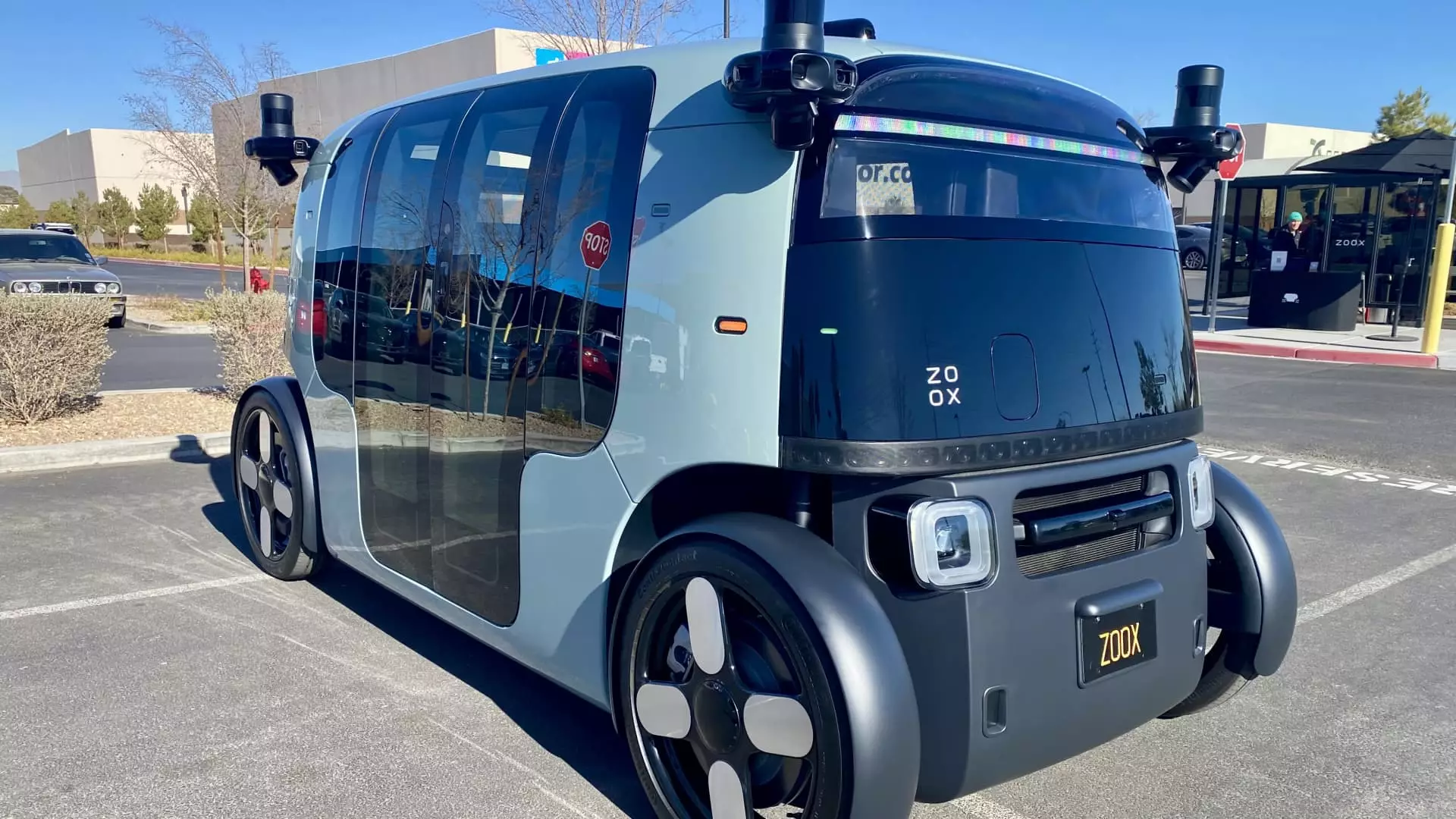As the race for autonomous vehicles accelerates, Amazon’s Zoox emerges as a key player with significant aspirations for 2023. With a focus on commercializing its robotaxi services, Zoox is on a mission to transform urban mobility by leveraging the latest in autonomous technology. However, the path is fraught with challenges as investor enthusiasm wanes and established automakers retreat from similar ventures. This article delves into Zoox’s strategies, potential market implications, and the broader context of the autonomous vehicle industry.
The Ambitions of Zoox
Zoox aims to launch its robotaxi service to the public imminently, aspiring to increase its fleet beyond the modest number currently operational. Co-founder Jesse Levinson has expressed both excitement and caution about this endeavor, emphasizing the work required to achieve their goals. With testing already underway in major cities like Las Vegas, San Francisco, and Foster City, Zoox is targeting Las Vegas as the first location for its commercial rollout, incorporating an “Early Rider Program” to gauge public interest and refine the service.
Through its unique vehicle design, devoid of manual controls, Zoox is differentiating itself from competitors like Waymo, which has retrofitted conventional cars for autonomous capabilities. This fundamental design philosophy raises questions about consumer acceptance and operational efficiency, as the market assesses what it wants from an autonomous ride-hailing service.
The autonomous vehicle industry has seen mixed fortunes over the past few years. Legacy automakers, once eager to capture market share, have disbanded their self-driving units amid increasing regulatory scrutiny and technological challenges. This backdrop makes Zoox’s ambitions even more significant, as the company seeks to carve out its niche amid uncertainty.
Despite its bold plans, Zoox faces stiff competition from established players like Waymo, which has developed a robust operational framework for its robotaxi service since 2017. Waymo’s expansion into various markets, coupled with its partnership with Uber, creates a formidable challenge for Zoox to overcome, especially as it looks to establish a foothold in cities like Miami and Austin in the future.
The inherent challenges in the business model for autonomous vehicles should not be overlooked. Many pioneers in this field, including GM’s Cruise, have faced setbacks that hindered their progression. Accidents unfortunately have marred the reliability and trust consumers have in autonomous technologies. This reality highlights the delicate balance Zoox must strike between innovation and safety.
Experts have noted that while Zoox’s technological capabilities may be advancing, the viability of its business model remains uncertain. Sam Abuelsamid, an industry analyst, suggests that, although technology is making strides, the fundamental question regarding sustainable operation remains. How can Zoox ensure profitability while covering high operational costs?
Potential customers are increasingly questioning whether the emphasis on safety and technology can translate into a seamlessly effective service that feels both convenient and safe. The expectations are immense, and the margins for error slim, as any negative incident could undermine years of development.
Moreover, even if Zoox can navigate the technical challenges, the regulatory landscape presents another layer of complexity. Each city has different regulations concerning autonomous vehicles, and Zoox will need to adapt its strategies accordingly to ensure compliance while pursuing rapid growth.
As Zoox strives to bring its autonomous robotaxis to market, 2023 looms as a potentially pivotal year. The ambitions outlined by Levinson are commendable, yet the realities of the market will undoubtedly test these aspirations. Consequently, as Zoox forges ahead, key decisions will need to be made regarding expansion timelines, safety protocols, and operational innovations.
In an environment where both investors and customers are skeptical, only time will reveal whether Zoox can solidify its place in the competitive landscape of autonomous transportation. By focusing on safety, technology, and a viable business model, there is potential for Zoox to redefine urban mobility. However, the challenges are significant, and the outcome remains uncertain. The drive to commercialize autonomous vehicles is fraught with risks but could yield transformative rewards if navigated effectively. For now, the industry watches closely to see if Zoox’s vision can turn into reality.

